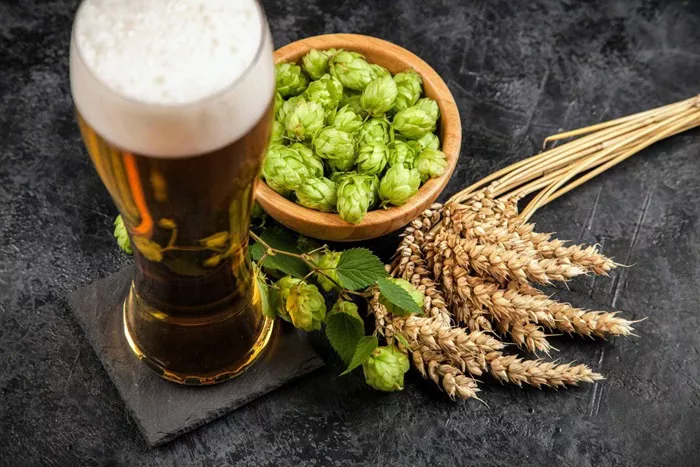Gluten-free beer has gained popularity in recent years. Many people are looking for alternatives due to health issues or dietary preferences. Traditional beers use grains like barley and wheat, which contain gluten. Gluten-free beers use grains like sorghum, rice, millet, and buckwheat. This change affects the flavor, aroma, and mouthfeel of the beer. Understanding what gluten-free beer tastes like can help consumers make informed choices.
The Brewing Process of Gluten-Free Beer
Ingredients Used
Gluten-free beers use different grains. Sorghum is the most common base. It provides a mild sweetness. Other grains, like rice, millet, and buckwheat, also contribute unique flavors. Each grain affects the final taste differently. Additionally, some brewers use gluten-free malt extracts.
Fermentation
Fermentation is crucial in beer brewing. Yeast converts sugars into alcohol. In gluten-free beers, the fermentation process can vary slightly. Different sugars from gluten-free grains may change the fermentation profile. This can influence the final taste.
Flavor Additions
Many gluten-free beers use hops for bitterness and aroma. Hops can add floral, fruity, or spicy notes. Some brewers also include adjuncts, such as fruits, spices, or herbs, to enhance the flavor. These additions can create a more complex taste profile.
Flavor Profile of Gluten-Free Beer
Aroma
The aroma of gluten-free beer can vary widely. Sorghum-based beers often have a sweet, cereal-like scent. Rice beers may present a cleaner, crisper aroma. Hops play a significant role too, adding floral or citrus notes. The type of grain and hops used will largely determine the beer’s overall aroma.
Taste
The taste of gluten-free beer can be quite different from traditional beer. Many gluten-free beers have a lighter body and a slightly sweeter flavor. Sorghum tends to have a honey-like sweetness, while rice can create a more neutral flavor. Some drinkers may find gluten-free beer less complex than traditional options. However, the use of hops and other ingredients can add depth and character.
Mouthfeel
Mouthfeel refers to the texture of the beer in your mouth. Gluten-free beers can feel lighter and less creamy. Some may have a dry finish, while others feel more refreshing. The mouthfeel will depend on the grains used and how the beer is brewed.
See Also: Can We Boil Beer?
Comparing Gluten-Free Beer to Traditional Beer
Flavor Differences
Gluten-free beer often tastes sweeter and lighter. Traditional beers, especially those made with barley, may have richer, more complex flavors. The difference comes from the grains and the brewing process. While some gluten-free beers can be hoppy and flavorful, they may lack the malt depth found in regular beers.
Variety
Traditional beers come in many styles, such as IPAs, stouts, and porters. Gluten-free beers are also expanding in variety. You can find gluten-free IPAs, stouts, and even sour beers. However, the selection may not be as extensive as traditional options. As the market grows, more brewers are experimenting with styles and flavors.
Consumer Preferences
Taste is subjective. Some people prefer the sweetness of gluten-free beers. Others may miss the complexity of traditional beers. It’s essential for consumers to try various gluten-free options to find what they enjoy.
Popular Gluten-Free Beer Brands
Omission Brewing Co.
Omission offers gluten-removed beers. Their approach retains the flavors of traditional beer while reducing gluten levels. Their pale ale and IPA are popular choices.
Bard’s Tale Beer
Bard’s is known for its sorghum-based beer. It has a light, crisp taste and is a favorite among gluten-free drinkers. Their beer is well-balanced and often compared to traditional lagers.
New Planet Beer
New Planet focuses on creating flavorful gluten-free options. They offer a range of styles, including blonde ales and IPAs. Their beers are brewed using sorghum, corn, and rice.
Tips for Choosing Gluten-Free Beer
Read Labels
Not all beers labeled gluten-free are safe for everyone. Always check the label for ingredients and certifications. Some beers may be gluten-removed, which might not be suitable for those with celiac disease.
Try Samples
When exploring gluten-free options, try small samples. This allows you to discover different flavors without committing to a full bottle. Many breweries offer tastings, which can help you find your preferred style.
Ask for Recommendations
Don’t hesitate to ask staff at beer shops or bars for recommendations. They can provide insights into popular gluten-free options and help you find something you’ll enjoy.
Conclusion
Gluten-free beer offers a unique tasting experience. It typically features sweeter, lighter flavors compared to traditional beers. The choice of grains, fermentation process, and flavor additions all contribute to its distinct taste. As the market grows, more options become available, catering to a variety of preferences.
Exploring gluten-free beer can be rewarding and delicious, allowing everyone to enjoy a refreshing beverage.
You Might Be Interested In:


